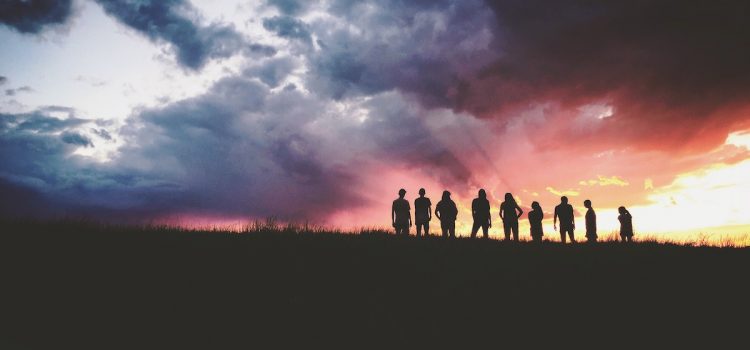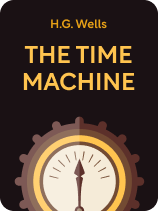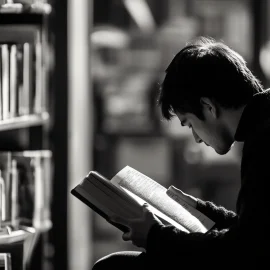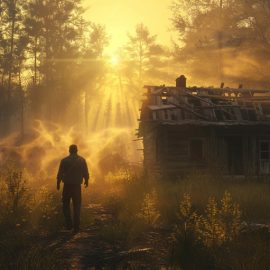

This article is an excerpt from the Shortform book guide to "The Time Machine" by H.G. Wells. Shortform has the world's best summaries and analyses of books you should be reading.
Like this article? Sign up for a free trial here.
Who are the Eloi? What do they represent? What’s their relationship to the Morlocks?
In H.G. Wells’s The Time Machine, Eloi are the first group of creatures the Time Traveller meets when he lands in the distant future. The Time Traveller figures they must be an evolved species of humans, but they’re not the only ones.
Keep reading to learn about the Eloi and the role they play in this classic story.
The Eloi in The Time Machine
When the Time Traveller arrives in the year 802701, he lands in a garden near a statue of a sphinx on a bronze pedestal. Soon after he steps out of the time machine, Eloi make their appearance. They look to be distant descendants of humans. The Time Traveller mentions that the Eloi are beautiful to look at but says that they have a number of strange features.
The Eloi are only about four feet tall and very slender, with little muscle. There are no physical differences between males and females, and the only difference between children and adults is their height. There are also no signs of disease among the Eloi population, and none of them seem to have jobs.
The Eloi show no fear of the Time Traveller, even though he’s a large (to them) and strange being who suddenly appeared among them. Instead of running away or attacking, they feed him fruit and try to teach him their language.
(Shortform note: Wells describes the Eloi in terms that make them seem childlike, which prompts the reader to feel sympathetic and protective toward them. The Eloi are like children both physically (small, lacking muscle, no obvious differences between sexes) and mentally (trusting, curious, and friendly). Furthermore, we associate children with both innocence and vulnerability—we instinctively feel that children are good people who need to be protected. Wells uses those instincts to create an emotional response to the Eloi, which heightens the tension later, when the Time Traveller and one of the Eloi are in danger.)
However, the Time Traveller senses that the Eloi aren’t very smart, contrary to his assumption that people in the future would be advanced and intelligent. He hypothesizes that the lack of hardship over many generations has made them this way—without any challenges to overcome, the Eloi have no need for physical strength or intelligence.
The Eloi are also apathetic: When one of them—a female named Weena—falls into a river, none of her companions try to help, so the Time Traveller jumps in to save her. Weena becomes attached to him after that and follows him for the rest of his time in the year 802701.
The Time Traveller removes the control levers from his machine so that nobody else can use it, then goes out to explore the world of 802701. He notes numerous ruins around the landscape, while the only intact buildings are large structures that remind him of palaces. There are no homes for individual families, which makes him think of communism; many families live together in large, shared homes.
(Shortform note: The Time Traveller’s reference to communism isn’t meant as an insult or a negative view of Eloi society. We know this because H.G. Wells was an outspoken socialist and a proponent of Karl Marx’s philosophy of communism, sometimes referred to as revolutionary socialism, which called for the working class to revolt and build their own socialist society. Therefore, these palace-like structures are meant to be further evidence of the Eloi’s seemingly perfect, utopian society.)
As night falls, the Time Traveller goes back to where he left the time machine and finds that it’s not there. He wakes a group of sleeping Eloi and demands to know what they did with his machine, but they seem confused and—for the first time—afraid. He later learns that the Eloi are terrified of the dark.
The next morning, the Time Traveller notices marks in the grass and deduces that someone dragged his machine inside the pedestal of the nearby sphinx statue, which must therefore be hollow. He asks the Eloi how to open the pedestal, but they’re shocked and appalled at the question. The Time Traveller decides he’ll have to learn more about the Eloi and their world to figure out how to get his time machine back.
(Shortform note: The sphinx statue could represent a number of things: Depending on the culture, sphinxes have been benevolent symbols of strength and divinity, or deadly monsters. This sphinx, however, probably plays a traditional role of guardian of hidden knowledge. For one thing, the Eloi—who have little knowledge of their own—are awed by the statue, as though recognizing that it represents something powerful and strange. Second, the time machine (a product of the Time Traveller’s knowledge) was taken inside the statue, meaning the Time Traveller has to get past the sphinx in order to access it.)
The Eloi’s Relationship to the Morlocks
On his fourth day in the future, the Time Traveller encounters a strange, pale, ape-like creature, larger than an Eloi. He concludes that humans have evolved into two species: the surface-dwelling Eloi and this subterranean race, whom he learns are called Morlocks. The Time Traveller is becomes certain that the Morlocks, not the Eloi, hid his machine (the Eloi were shocked at the idea of opening the pedestal).
The Time Traveller then follows the fleeing Morlocks to a huge chamber. Inside the chamber is a table with a large hunk of meat on it. He reasons that it must be Eloi meat, since he hasn’t seen any farm animals either on the surface or underground.
(Shortform note: Just as the readers are meant to instinctively feel protective toward the Eloi, we’re meant to instinctively fear and hate the Morlocks. This is because the Morlocks are the opposite of the Eloi: While the Eloi are childlike, peaceful, vegetarian, and afraid of the dark, the Morlocks are bestial, aggressive, carnivorous, and afraid of light. These details are setting us up so that Wells can subvert our expectations by revealing that the Eloi and the Morlocks have a symbiotic relationship—in other words, each species needs the other to survive.)
The Time Traveller now understands that, while the Eloi might be the descendants of a wealthy ruling class, they’re now essentially well-kept livestock. In other words, the Morlocks continue to make clothes for the Eloi and see to their needs, while also using them as a food source.

———End of Preview———
Like what you just read? Read the rest of the world's best book summary and analysis of H.G. Wells's "The Time Machine" at Shortform.
Here's what you'll find in our full The Time Machine summary:
- An overview and analysis of H.G. Wells's 1895 science fiction novel
- A look at the science behind the story—what's real and what's fiction
- The literary techniques and symbolism Wells used to craft the story






